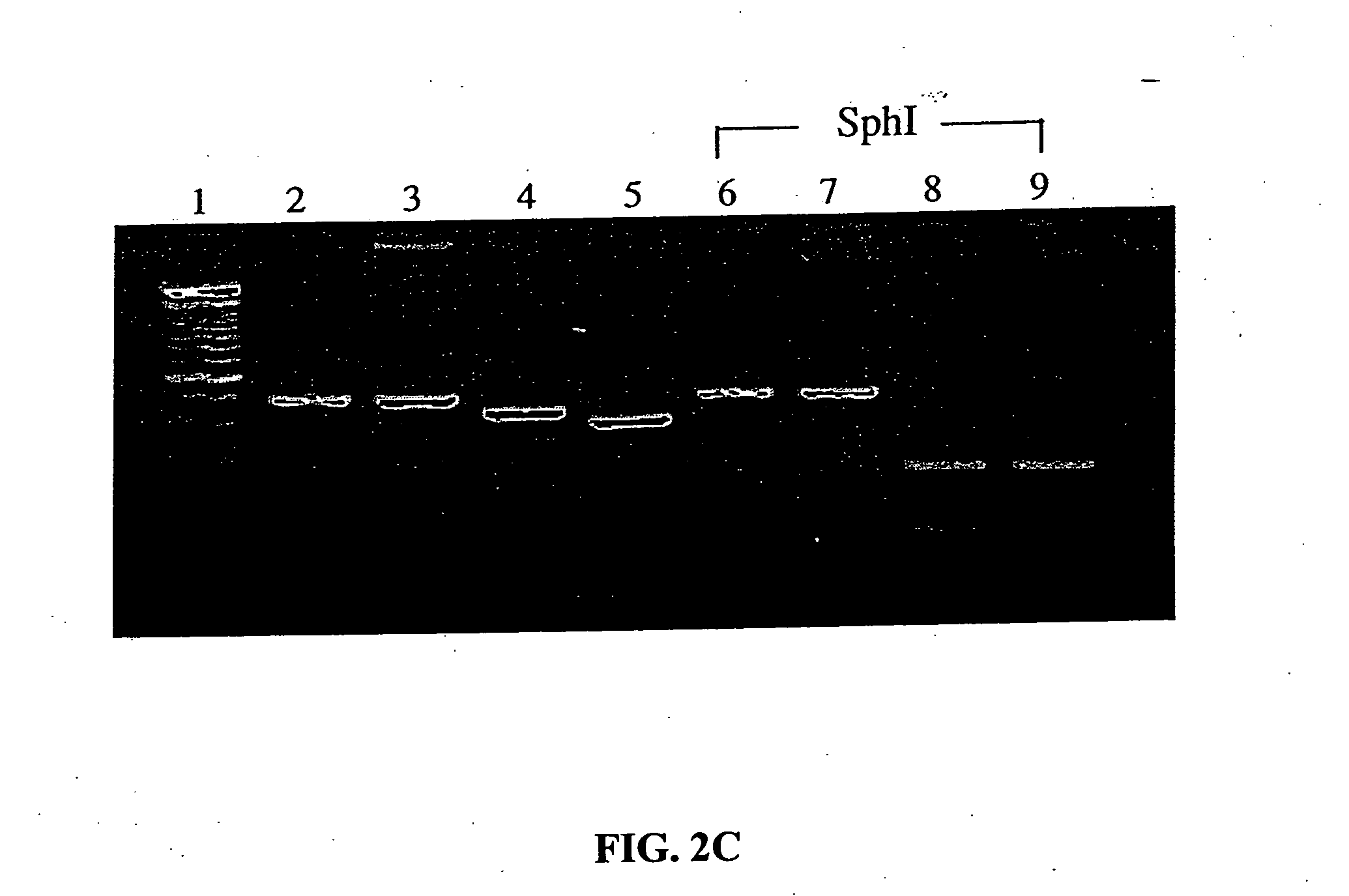Diminishing viral gene expression by promoter replacement
a promoter replacement and viral gene technology, applied in the field of viral vectors and packaging cell lines, can solve the problems of virus infectability but not replication, toxicity and immunogenicity of adenoviruses, etc., and achieve the effect of reducing the viral gene expression of such vectors
- Summary
- Abstract
- Description
- Claims
- Application Information
AI Technical Summary
Benefits of technology
Problems solved by technology
Method used
Image
Examples
example 1
Methods and Materials
[0172] Cell culture. H1299 cells (obtained from Drs. Adi Gazdar and John Minna, University of Texas Southwestern, Dallas, Tex.) and A549 (American Type Culture Collection, Rockville, Md.) were derived from human non-small cell lung cancers. All cell lines were cultured at 37° C. in a humidified atmosphere of 95% air and 5% CO2. 293 cells and A549 cells were maintained in Dulbecco's modified Eagle's medium (DMEM) containing 4.5 g / l glucose with 10% FBS. Syngenetic 1422 cell line derived from C3H / HeN tumor was obtained from Dr. Amanthaswarmy at MDACC, Houston, Tex. and CL4 / SV40 cell line derived from C57BL / 6 mouse fibroblast transformed by SV40 was obtained from ATCC, and both cell lines were maintained in DMEM with 10% FBS. H1299 cells were cultured in RPMI 1640 supplemented with 5% FBS. Penicillin (100 U / ml) and streptomycin (1000 mg / ml) were included in the culture media. For selection of neomycin-resistant cells, G418 (400 mg / ml) was included in the medium.
[...
example 2
Construction of a Packaging Cell Line Expressing GAL4 / VP16
[0197] A 293 cell line expressing GAL4 transactivating protein is required for generating an adenoviral vector whose E4 promoter is replaced by GAL4 / TATA. The plasmids pM2 / VP16 (containing a gene encoding the GAL4 / VP16 fusion protein driven by SV40 early promoter) and pG5EC (containing a minimal promoter consisting of five consensus 17-mer GAL4 sites upstream from the adenovirus E1B TATA box) were obtained from Dr. I. Sadowski (University of British Columbia, Vancouver, Canada). Naive 293 cells were transfected by the CaPO4 method with pM2 / VP16 and pRSV / Neo, which encodes a neomycin-resistance gene driven by a Rous sarcoma virus-long terminal repeat (RSV-LTR), at a pM2 / VP16:pRSV / Neo ratio of 10:1. The G418-resistant colonies were isolated and tested for their ability to transactivate GAL4 / TATA promoter. The plasmid pG5EC, which contains a chloramphenicol acetyltransferase (CAT) gene driven by the GAL4 / TATA promoter, was tran...
example 3
Construction of an Adenoviral Vector with E4 Driven by the GAL4 / TATA Promoter
[0198] The inventors initially attempted to construct a vector in which GAL4 / TATA would drive an E4 expression cassette inserted into the E1 region of the dl366 backbone (Halbert et al., 1985). This failed, however, because all of the viral preparations were contaminated with wild-type E1 or E4 virus. Several rounds of plaque purification did not solve the problem. This was attributed to the instability of the viral constructs, presumably due to the overlapping of E4 sequences in the E1 region with those in the dl366 backbone. In a second attempt, vectors were constructed by replacing the E4 promoter with GAL4 / TATA in the original E4 region. In brief, two transfer plasmids (pBF7A and pBF7B) were constructed on a pNEB 193 backbone (New England Biolabs, Beverly, Mass.). Both contained adenoviral sequences between map units 70 and 100 (FIG. 2A) and differed only in the right end of their terminal repeats. In ...
PUM
| Property | Measurement | Unit |
|---|---|---|
| Time | aaaaa | aaaaa |
| Responsivity | aaaaa | aaaaa |
| Gene expression profile | aaaaa | aaaaa |
Abstract
Description
Claims
Application Information
 Login to View More
Login to View More - R&D
- Intellectual Property
- Life Sciences
- Materials
- Tech Scout
- Unparalleled Data Quality
- Higher Quality Content
- 60% Fewer Hallucinations
Browse by: Latest US Patents, China's latest patents, Technical Efficacy Thesaurus, Application Domain, Technology Topic, Popular Technical Reports.
© 2025 PatSnap. All rights reserved.Legal|Privacy policy|Modern Slavery Act Transparency Statement|Sitemap|About US| Contact US: help@patsnap.com



